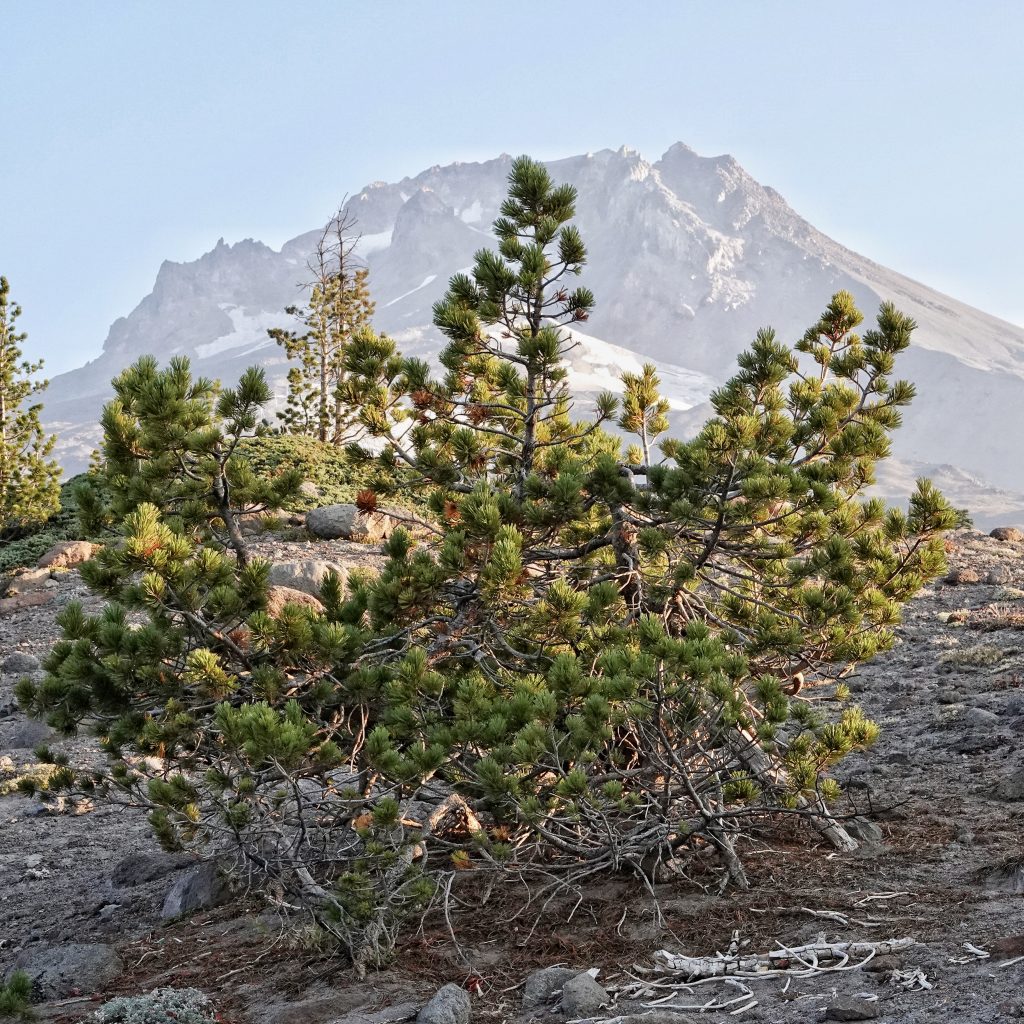
I found my first specimens of these conifers on a trip to Mt. Hood last October, but it took a second visit to Timberline Lodge a couple days later to confirm identification, because on my initial encounter with them I couldn’t find any trees that had cones (which, it turns out, is not unusual, because squirrels and Clark’s nutcrackers start harvesting the ripening cones in August), and the needles, though relatively stiff, all seemed to measure (2-3”) in the overlap range between Pinus albicaulis and P. monticola. On my second trip I was fortunate to find many whitebark pines, some of which sported cones, and I was able to establish a gestalt for these trees, which consists of gnarled limbs with tight tufts of very green needles and either single trees or small, closely associated clumps, often a single relatively large tree surrounded by shrubbier ones, but still isolated from other trees.
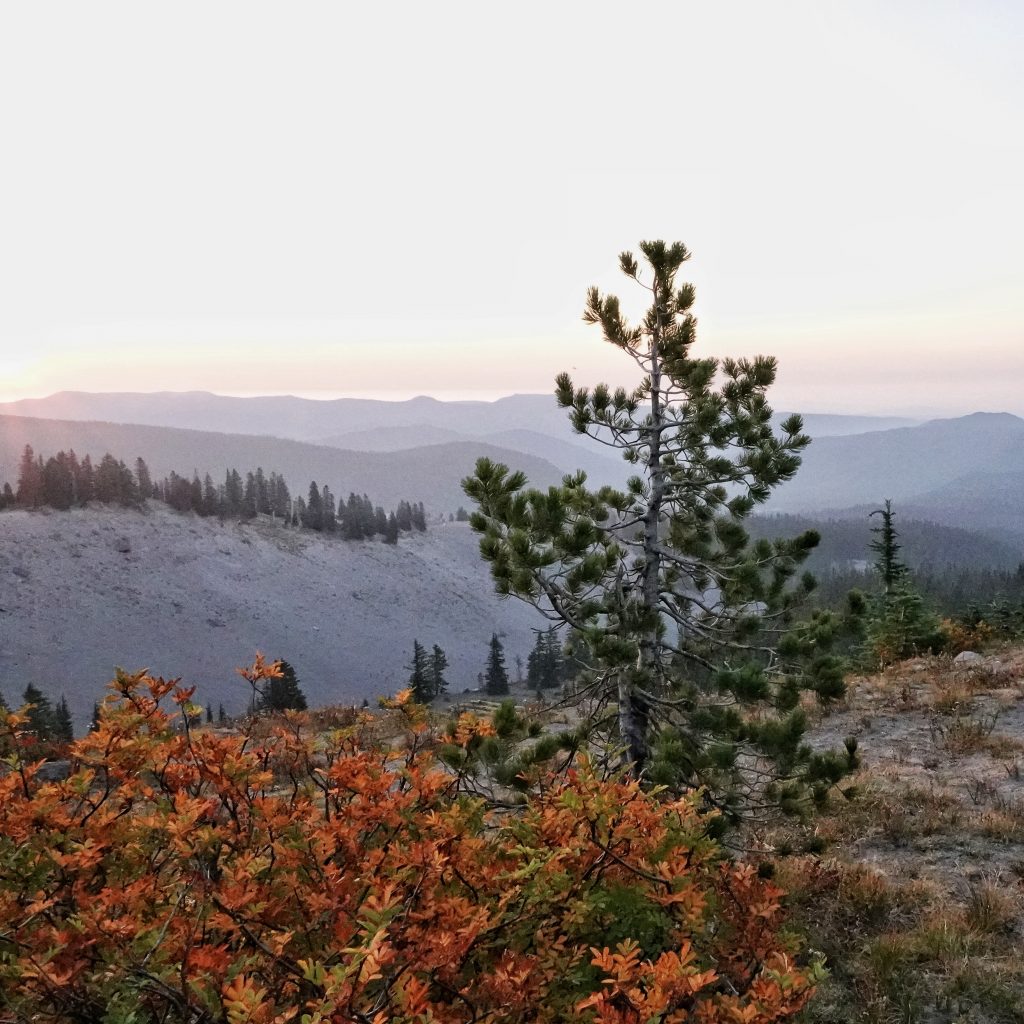
It is not surprising that most of these trees are found singly or in clumps, because most of the seeds which germinate were ‘planted’ by squirrels and Clark’s nutcrackers, who cache the seeds in the ground at an ideal depth for germination. There is a tight mutualism between whitebark pine and Clark’s nutcrackers, with the majority of the bird’s food, especially that consumed in winter, coming from the seeds of these trees. And Pinus albicaulis as a species benefits greatly from the nutcrackers habit of caching far more seeds than they can eat, with the leftovers often germinating and providing the next generation of trees. Douglas and red squirrels also cache large amounts of seeds, many of which go uneaten, but they tend to deposit them in forest settings that don’t provide enough light for the pines to survive, though they do provide a valuable seedbank in the event of a fire or other canopy opening event. For more on the relationship between whitebark pine and Clark’s nutcrackers see Arnold (2022).
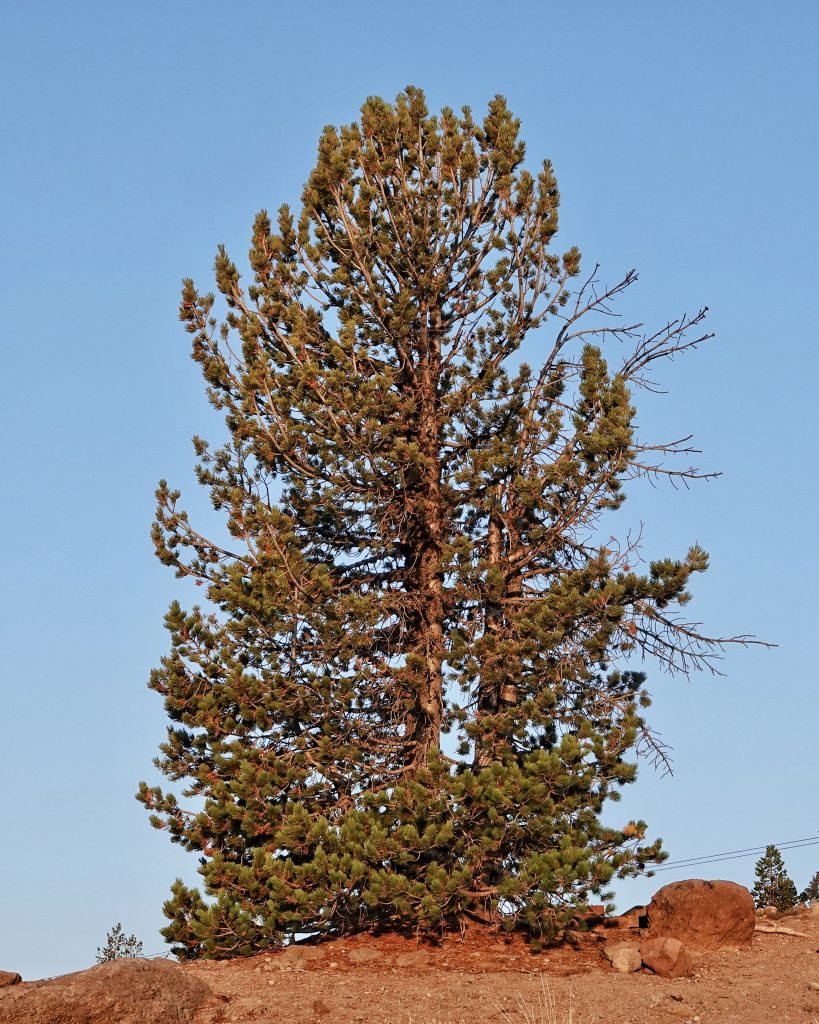
The downside is that this isolation may hinder cross pollination, and even in a small clump with several trees the fact that they may have all sprouted from genetically similar seeds from a single tree will increase inbreeding, which also reduces regeneration success. Lack of regeneration success is particularly problematic in light of the decline in numbers of Pinus albicaulis, which was recently listed as ‘Threatened’ by the USFW Service. The biggest threats to white bark pine are white pine blister rust (caused by the introduced fungi Cronartium ribicola), mountain pine beetles (Dendroctonus ponderosae), and an increase in both the number and severity of wildfires, all of which causes are exacerbated by climate change. For more on the threats facing this species see ‘Restoring Whitebark Pine Ecosystems in the Face of Climate Change’, Keane, et al, or check out the Whitebark Pine Ecosystem Foundation website.
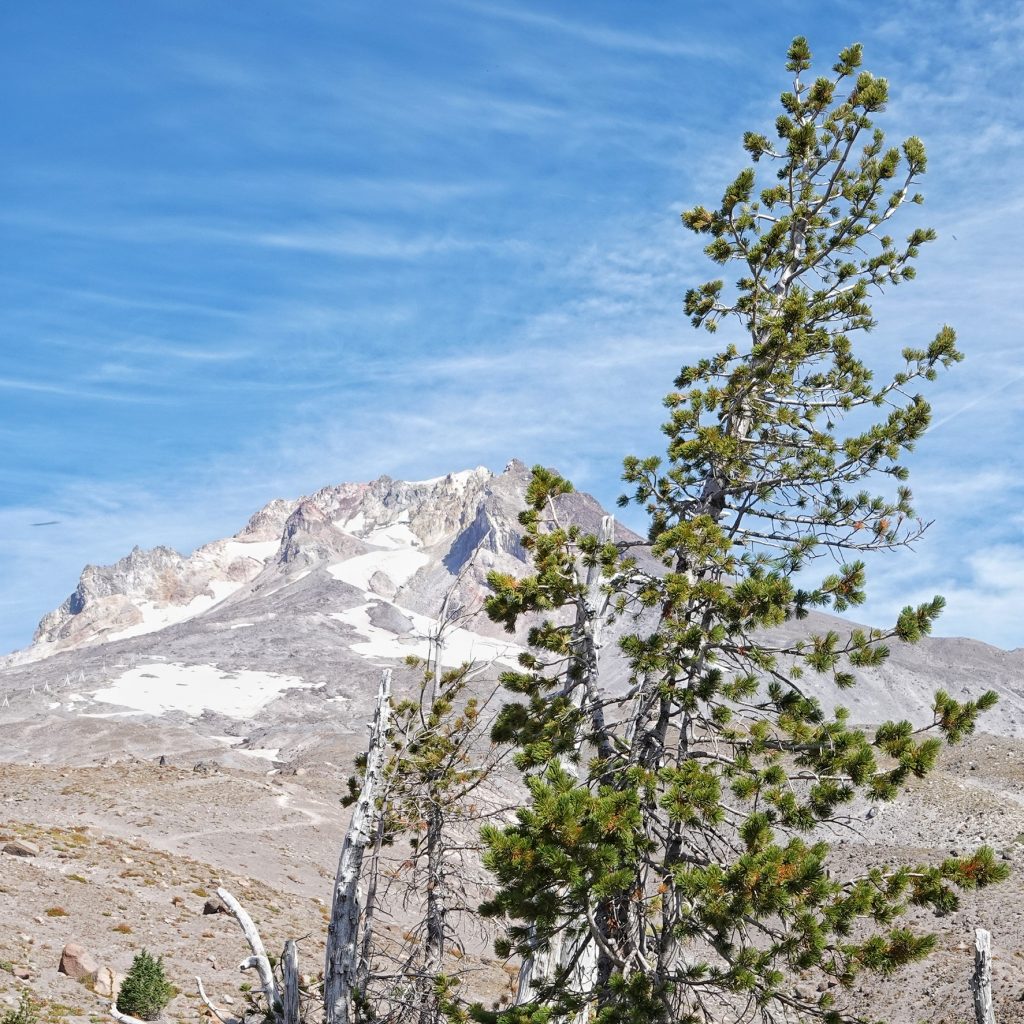
Whitebark pines are intolerant of shade, and seldom grow in the understory of a forest unless they are on the outer margins, or are in the process of being replaced by taller and faster growing species. Mature whitebark pines have moderately thick bark (thinner than ponderosa pine but thicker than lodgepole pine) and can survive low to moderate severity fires, though younger and thinner trees are not so lucky, and the scarcity of fuel surrounding many stands often protects them from burning at all. Whitebark pines are known to live over 1000 years. For more on the general growth ecology of Pinus albicaulis see Arno/Hoff (1990) or Fryer (2002).
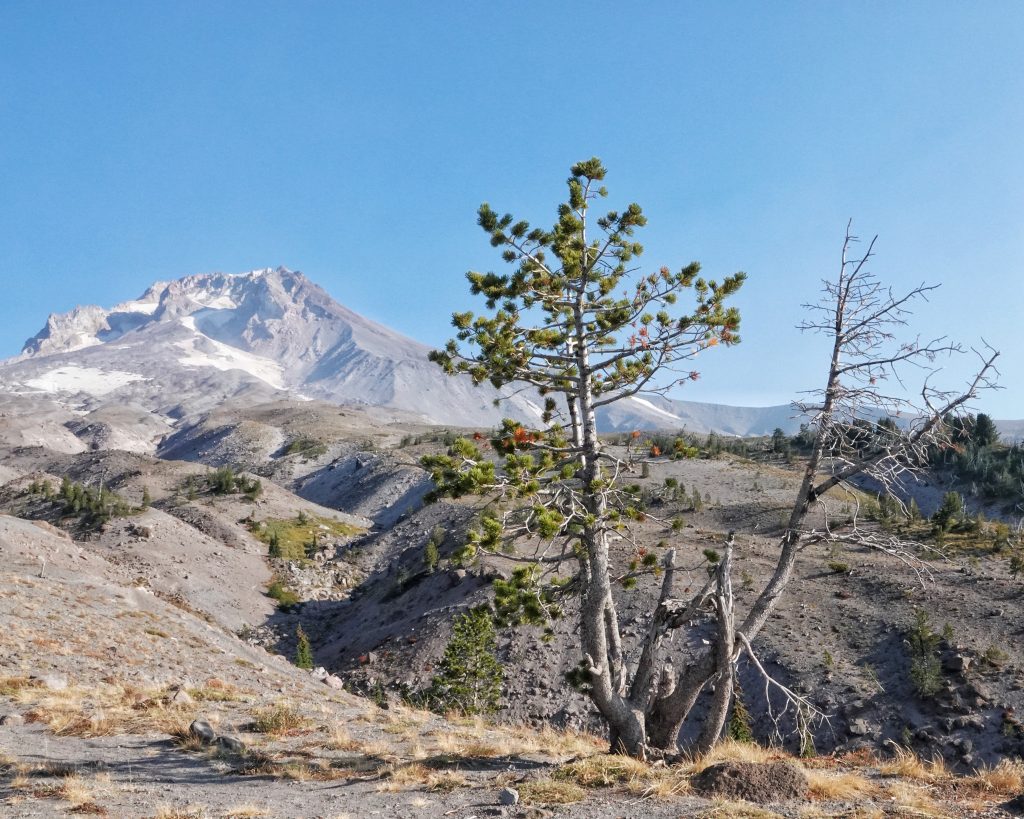
Because they are relatively small and inaccessible, their is very little commercial use for this tree. Indigenous peoples and modern day foragers do make use of the highly nutritious seeds, but I can find no medicinal purposes to which it was put. But it is an incredibly valuable tree to the denizens of its high elevation habitat, and if one needs to find a value to humans in this tree to justify saving it, then one has truly disordered priorities but doesn’t have to look farther than the aesthetic beauty of these trees, and the hardiness and fortitude displayed by their twisted and gnarled limbs.
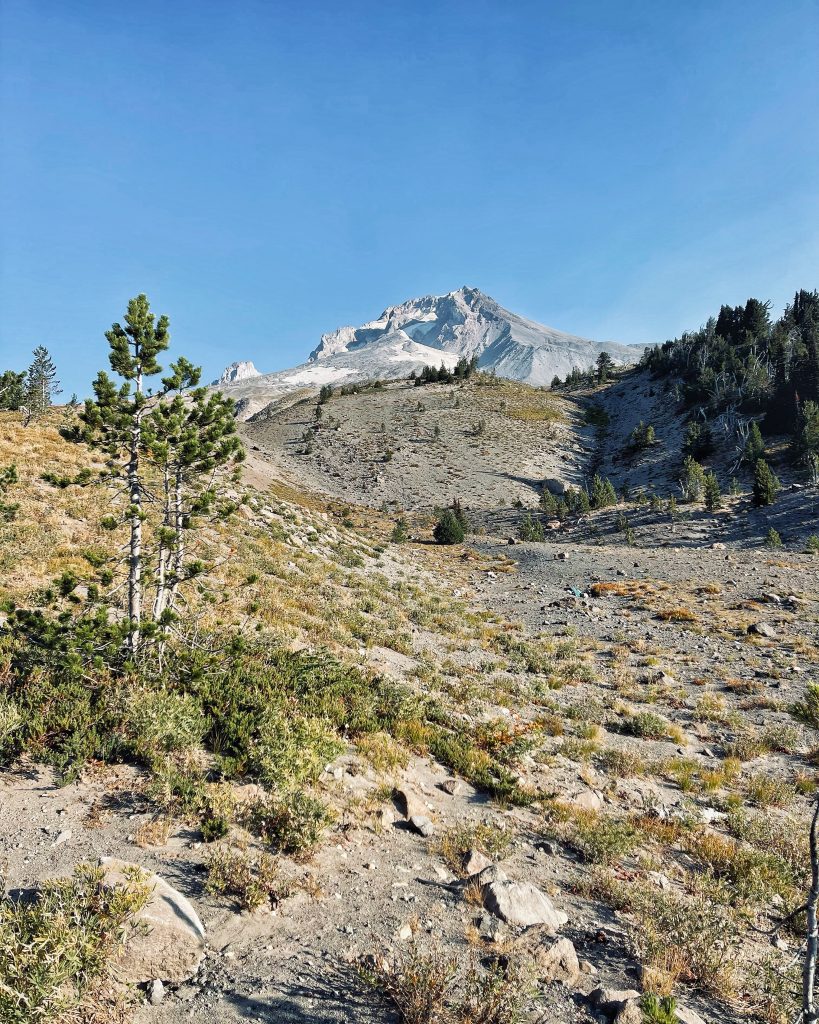
Description– Shrub or small tree (seldom over 50’ tall, and usually less than 25’ tall), with whitish bark and 5 needles per fascicle; needles are stiff, 1.5-3” long, with indistinct stomatal bloom on all surfaces; cones are 1.5-3” long, and do not open on the tree; often with contorted limbs, even when developing as a tree;
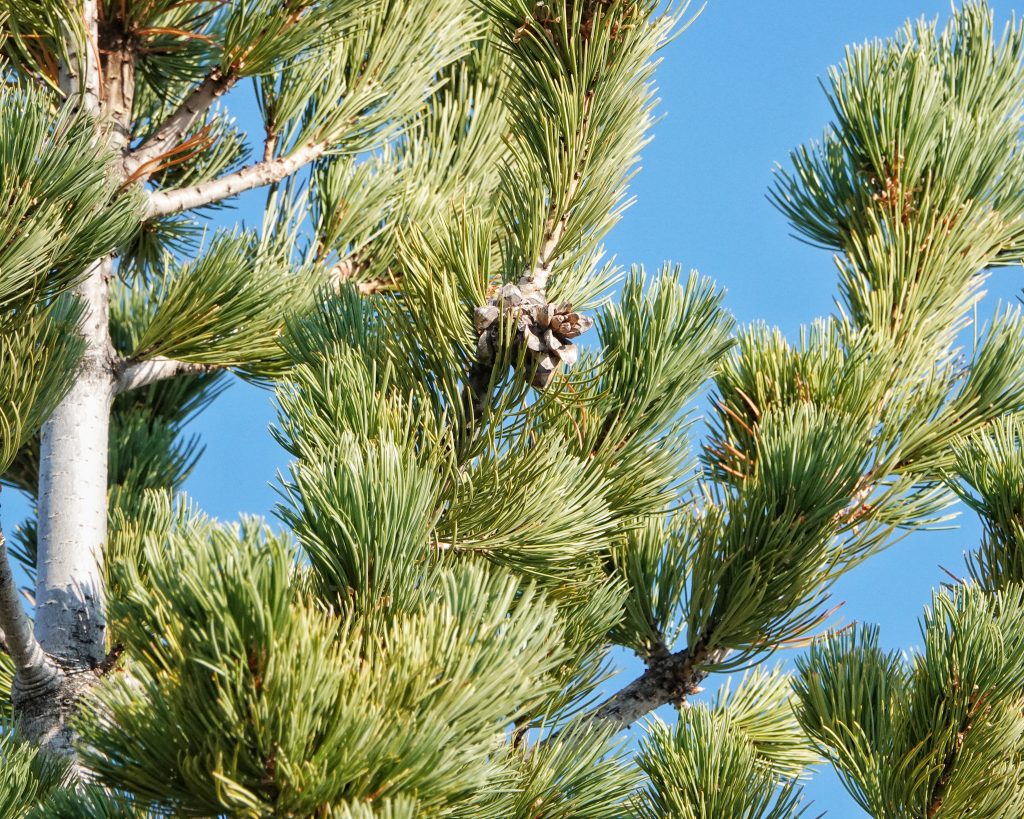
Similar species–Pinus monticola and P. lambertiana have longer (2-4” long), softer needles, are usually found well below timberline, are usually relatively straight trunked trees, and have much longer cones; Pinus flexilis has larger (3.5-7”) cones that are pitchy and open on the tree, and is only found in our region in the Wallowas and Rockies; all other pines in our region have 2-3 needles per fascicle.
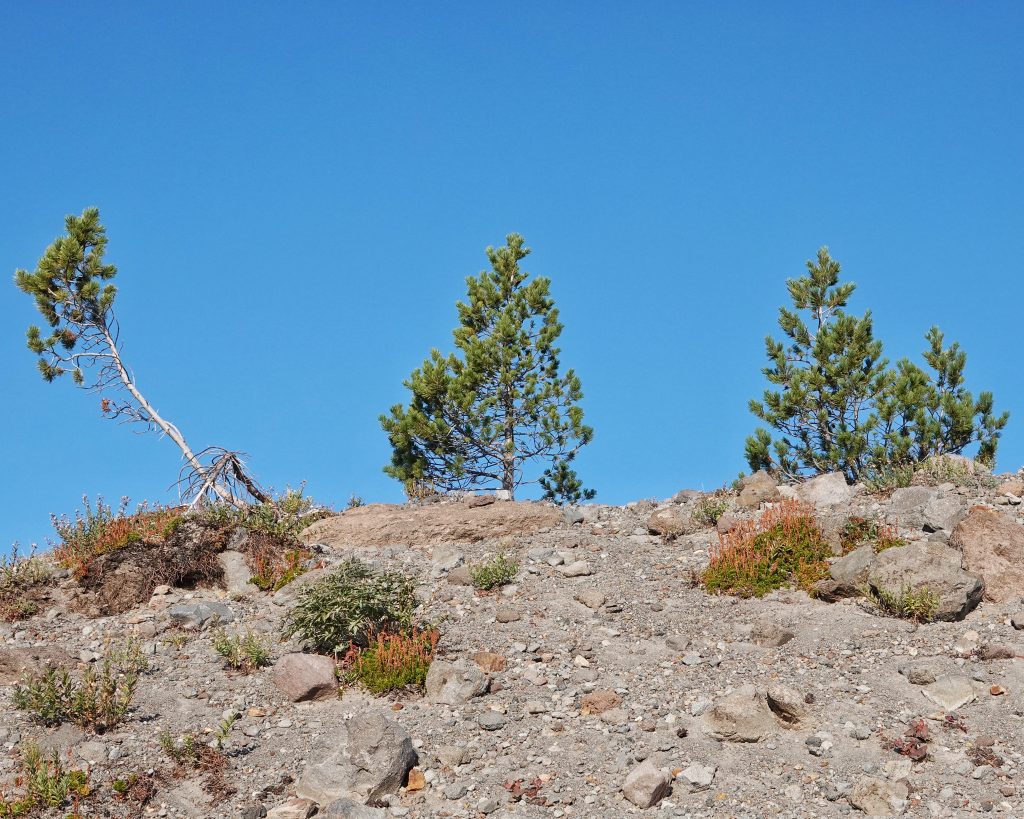
Habitat-Rocky soils and open forests above 4,000’ elevation; most frequently found at or near timberline.
Range-Western North America; in our region they are found in the Cascades, Siskiyous, Klamaths, in the rain shadowed northeastern Olympics, Blues, Wallowas, and the Rockies and their connecting ranges; seemingly absent in the Coast Range.
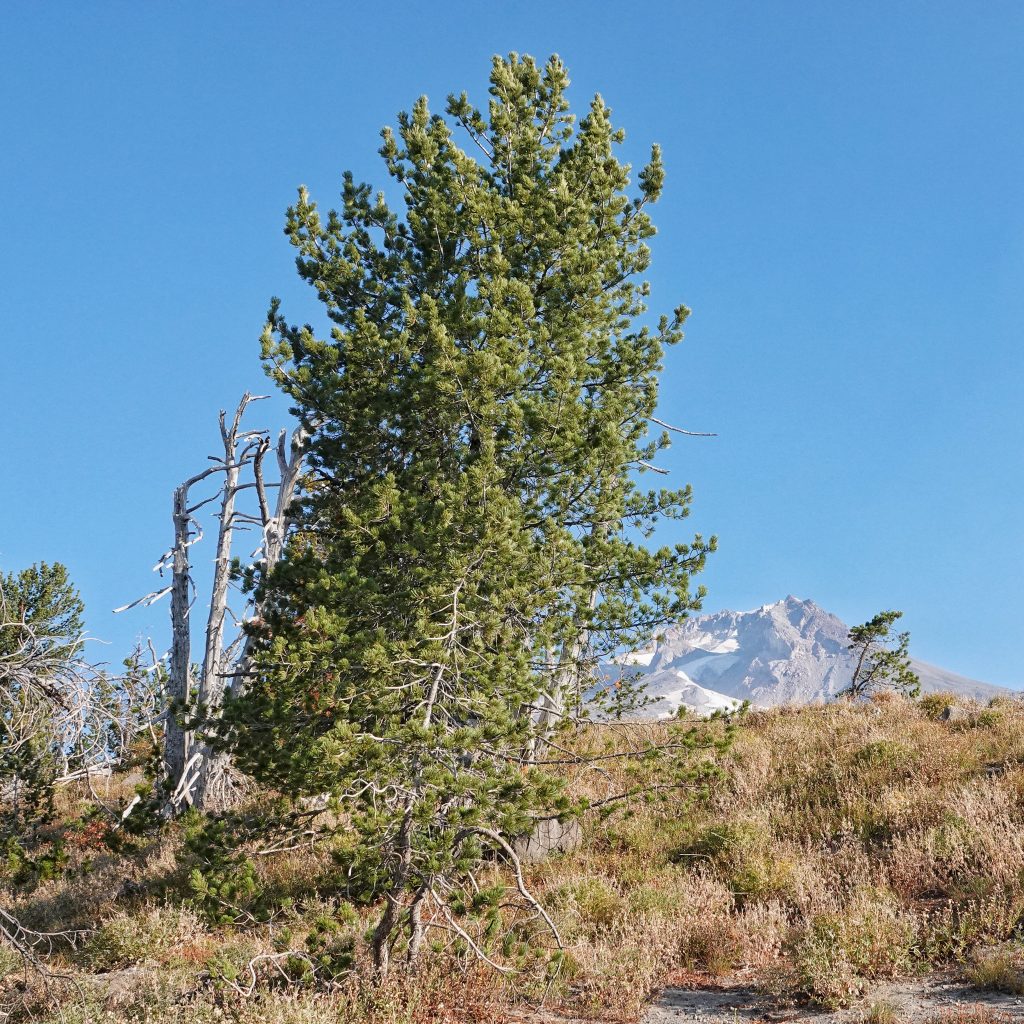
Eaten by- The beetles Dendroctonus ponderosae, D. valens, Ips plastographus, I. mexicanus, Pityophthorus aquilonius, P. collinus, Pityogenes carinulatus, P. fossifrons, Conphthorus ponderosae, and ambrosia beetles in the genera Platypus, Gnathotricus, Trypodendron, and Xyleborus; Western conifer seed bugs; used as a larval host by Pine White butterflies, and the moths Dioryctria abietivorella, Eucopina recissoriana, Argyrotaenia tabulana , Choristoneura occidentalis, and Eucosma spp.; Essigella gillettei aphids, Puto cupressi and P. pricei mealybugs, red and Douglas squirrels, and Clark’s nutcrackers harvest the cones from trees; golden-mantled and Cascade golden mantled ground squirrels, chipmunks, hairy and white-headed woodpeckers, Williamson’s sapsuckers, mountain chickadees, white-breasted and red-breasted nuthatches, Steller’s jays, ravens, pine grosbeaks, red crossbills, blue grouse, and Cassin’s finches all eat the seeds, often from fallen cones or squirrel caches; grizzly and black bears eat enormous amounts of the seeds, but they are usually stolen from squirrel and Clark’s nutcracker caches; various buprestid and longhorn beetles using dead and dying trees as larval hosts.
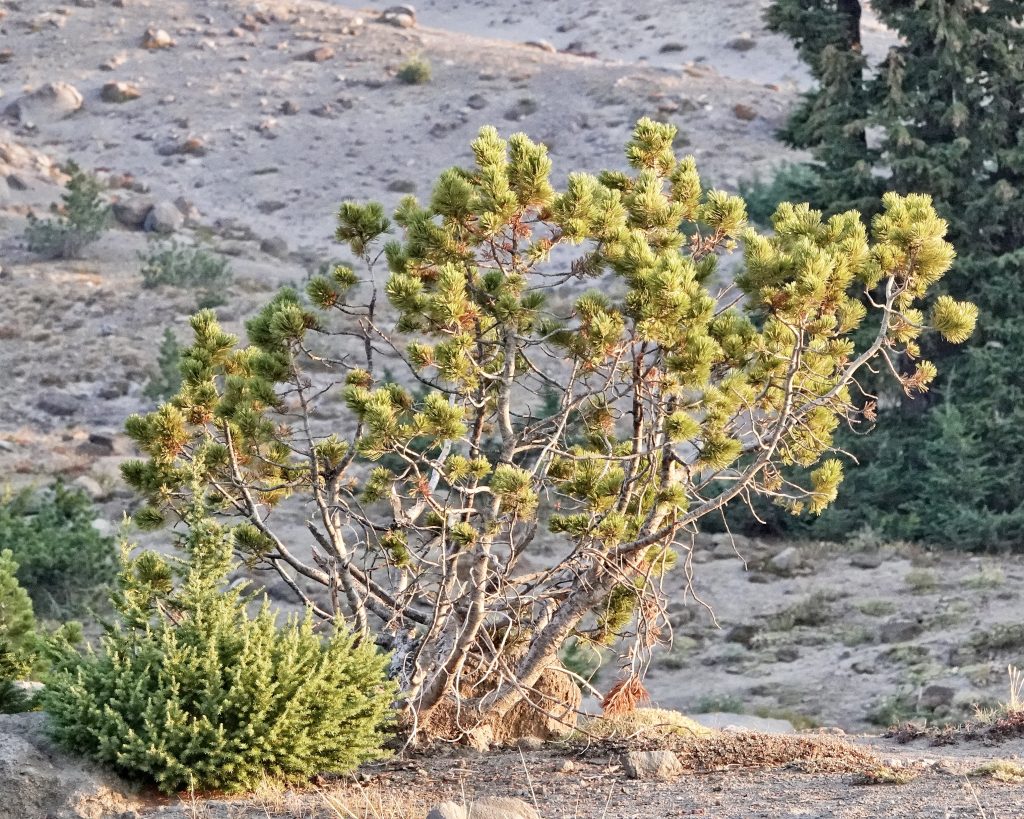
Reproductive timing-Pollen is shed and fertilization occurs in June and early July, but seeds don’t ripen until September of the following year; seeds are not released while the cone is on the tree, although Clark’s nutcrackers and squirrels may prise them from the cones at this point; seeds are released after the cones have fallen and are disintegrating on the ground, usually from mid September through November.
Etymology of names– Pinus is from the Latin word for pines. The specific epithet albicaulis is from the Latin words for ‘white stem’, and refers to the whitish bark.
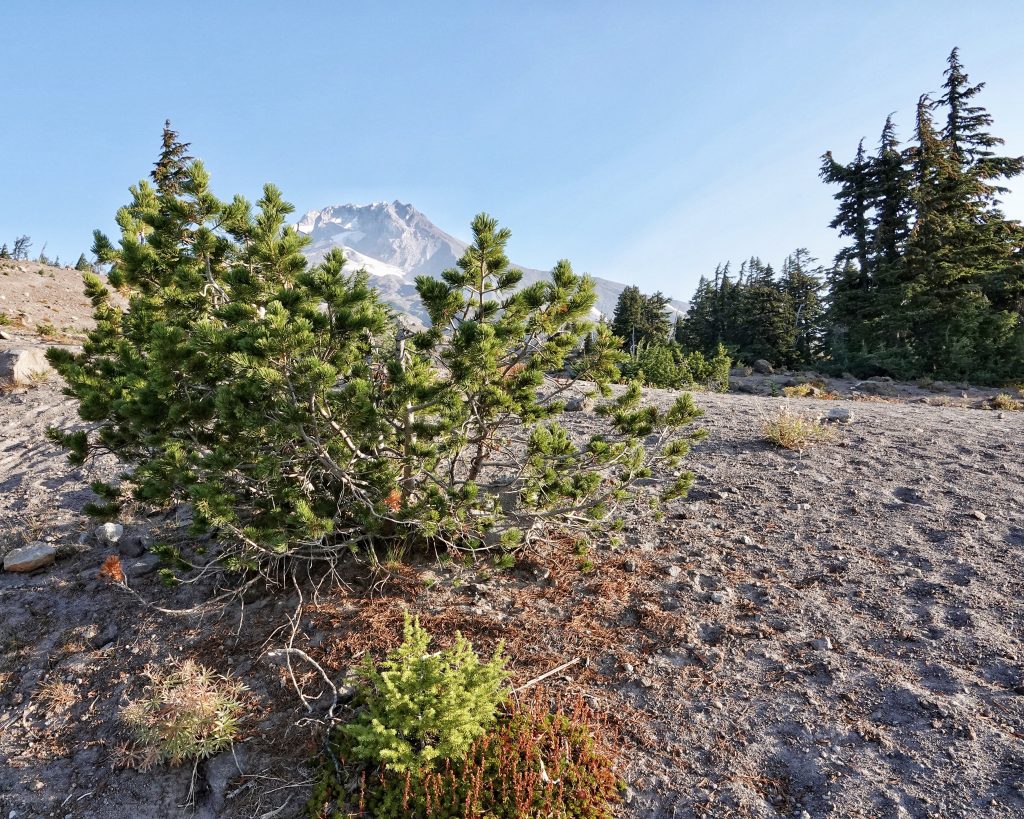
https://www.fs.usda.gov/rm/pubs_series/rmrs/gtr/rmrs_gtr361.pdf
Pinus albicaulis (whitebark pine) description – The Gymnosperm Database
Whitebark Pine – Featured Creature (U.S. National Park Service)
https://www.fs.usda.gov/Internet/FSE_DOCUMENTS/stelprdb5262952.pdf
BRIT – Native American Ethnobotany Database
Is the Fate of Whitebark Pine in the Beak of Clark’s Nutcracker? (U.S. National Park Service)
https://www.nps.gov/articles/conserving-whitebark-pine-and-clarks-nutcrackers.htm
https://en.wikipedia.org/wiki/Cronartium_ribicola
Leptoglossus occidentalis (Western Conifer Seed Bug) – 10,000 Things of the Pacific Northwest
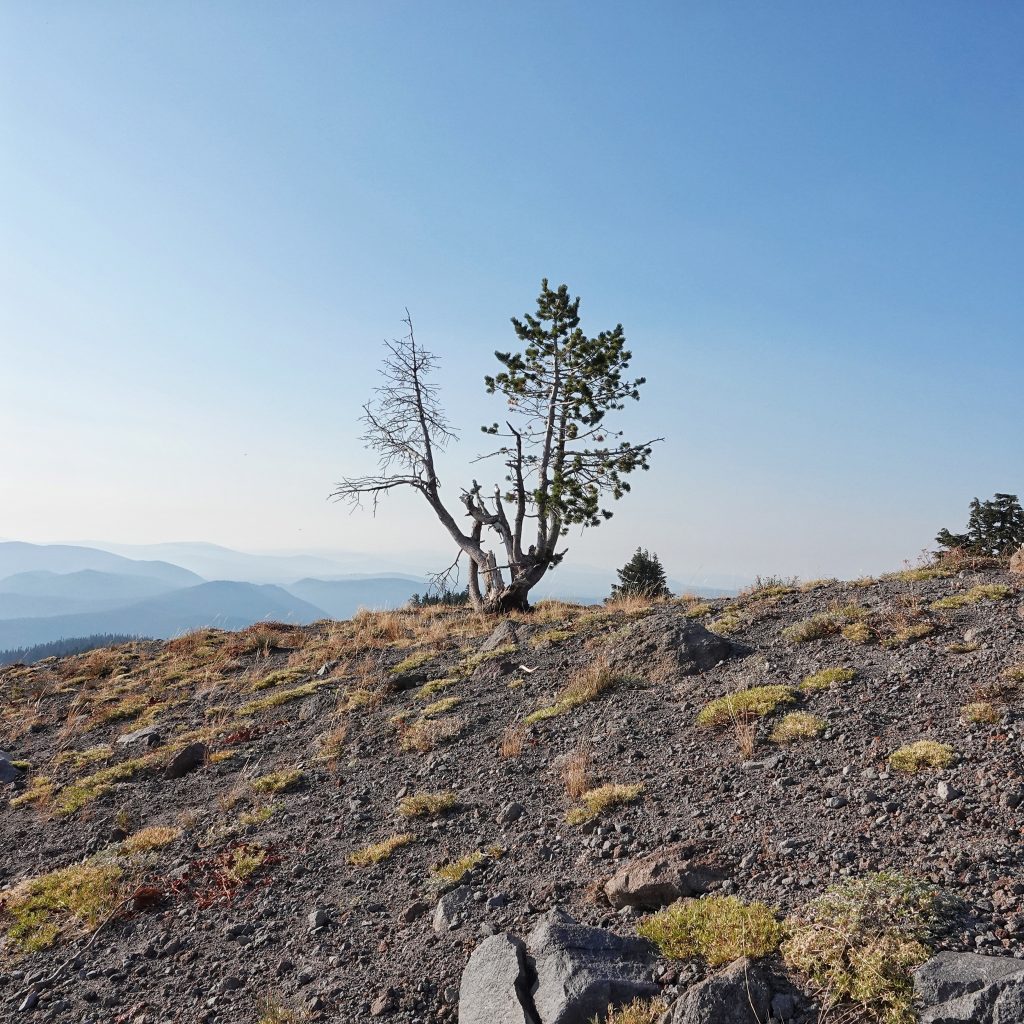
As usual your post was loaded with excellent links to further investigate for hours if I followed them all. Thank you. I wonder though about the use of the word “restoring” this white pine. How can a non-commercial tree with a very definite ecological niche that is being devastated by a foreign, deadly blister rust and global warming ever be brought back? Not to mention the natural animal and insect systems that are dependent on this tree! It’s along the same vein as those who write about “protecting” our native ash trees from the emerald ash borer. Not going to happen.
You are probably right. It is probably hopeless. But I’m always glad to hear that people are attempting to stem the tide of destruction.